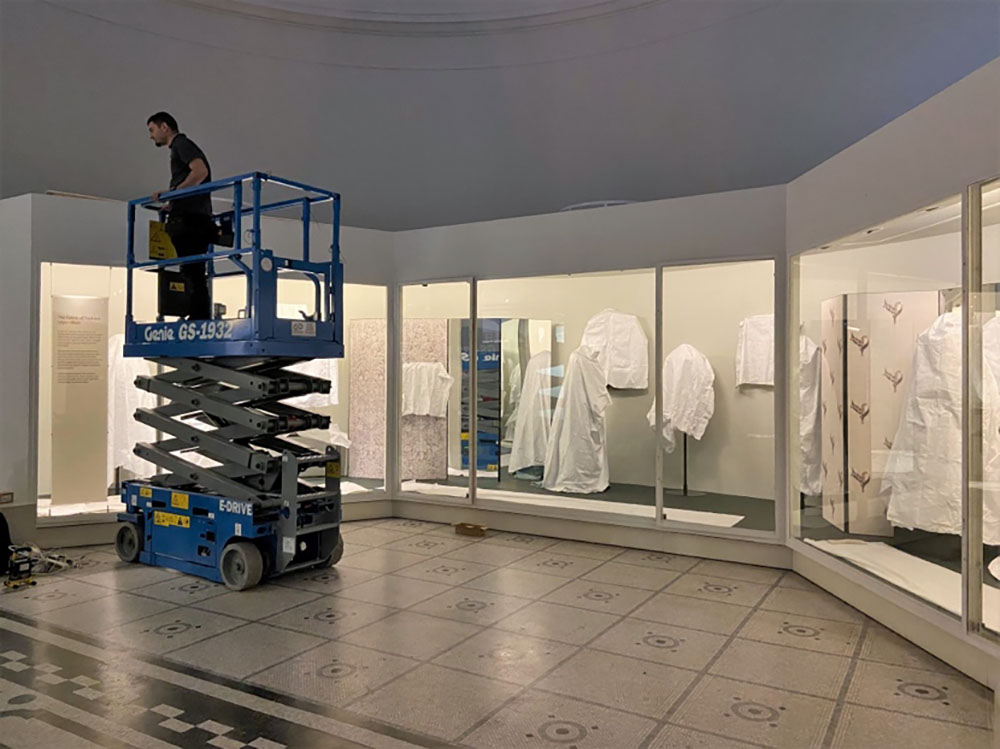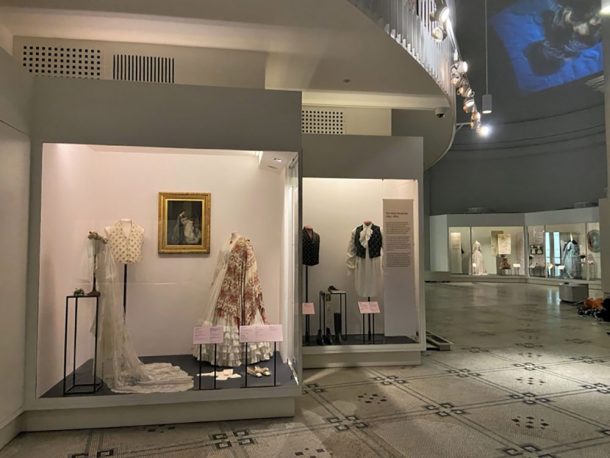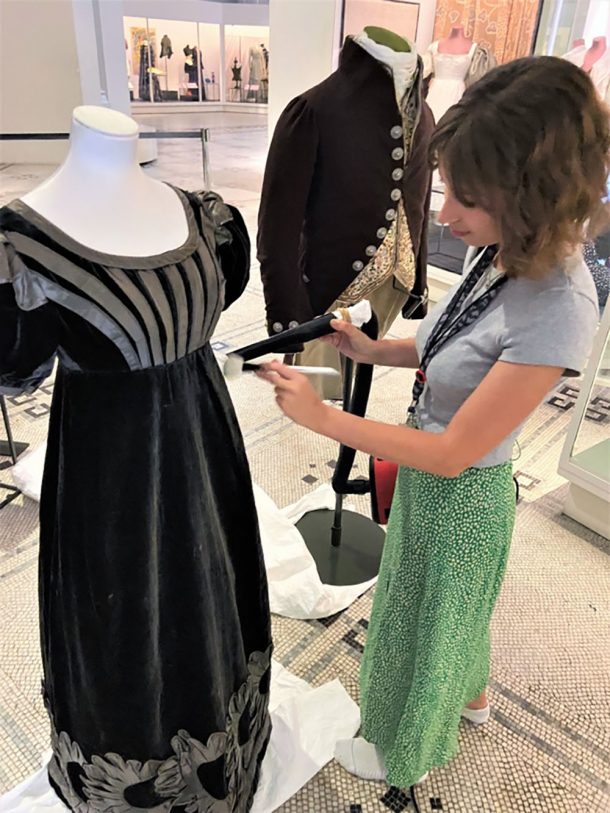The lighting in a museum can be manipulated to help hide parts of objects, or conversely, reveal details that might otherwise go unnoticed. It is a crucial element for Curators to consider in how to highlight and showcase objects. This is not always a straightforward process, especially when the ideal visual conditions for displaying fragile textiles and fashion might be harmful to what is on display. As textiles are particularly sensitive to light, fashion galleries in museums are typically low-lit. Our challenge is to present objects well enough for everyone to see, without causing damage, such as fading. To be more specific, for vulnerable objects we need to limit our light levels to 50 lux (the light level of a ‘dim living room’), but maintain a good Colour Rendering Index in the high 80s, (or ideally greater than 90). Across the museum, we are moving to Light-emitting Diode (LED) lights for sustainability and energy efficiency reasons, and updating our lighting technology as we refurbish galleries. This is sometimes a complex process, especially in the Fashion Gallery – partly due to the nature of the objects, but also because the object cases there were installed in the 1960s.

The work was a collaboration between Curatorial, Preventive Conservation, and Estates staff, with many months of trials and attempts to find a suitable LED replacement for the existing lights. We had to close the gallery for a week as we removed and covered objects, to protect them from any potential dust while the lights were being worked on. We spent a lot of time carefully manoeuvring spotlights to point in certain directions, while aiming the lighting towards the walls to create an ambient lighting effect without harsh spotlights on the objects.


This re-lamping of the Fashion Gallery comes after a recent project was completed to clean all the cases and objects in the gallery. This was completed in collaboration with our Preventive Conservation and Housekeeping teams, and will now be part of a regular housekeeping schedule for the gallery, focused on object dusting.
This cleaning was an opportunity to go into the cases and dust every object that was on display. We started by carrying out preliminary cleaning of the case floors with microfibre cloths, to prevent any disturbed dust settling on the objects. We then removed smaller objects, such as labels, plinths and accessories, out of the cases, before the mounted garments on mannequins. For safety, museum objects were placed either on trollies, silk pads, polyethylene sheeting, or bean bags, and any objects we were unable to remove were dusted inside the cases.


As our Housekeeping team were tasked with cleaning the tops of the cases, we needed to prevent any potential dust-fall on to the objects remaining inside. To do this, they were covered with Tyvek mannequin covers. The actual dusting of the objects was completed using tools including soft brushes, small air pumps, and vacuums, requiring staff to gently remove any dust on the surface of the garments, textiles, accessories and furniture. At the end of the cleaning process, we reinstalled all of the objects back into their original positions. Although this process is lengthy and meticulous, ultimately it allows us to prevent any potential further damage to objects through dust accumulation.
The Fashion Gallery has continued to change and adapt since its formation as the Dress Court in 1954, and it is our responsibility as carers of these objects to continue to create the best possible environment for them to be presented to audiences for many years to come.



Interesting piece!
A fashionable blog :)